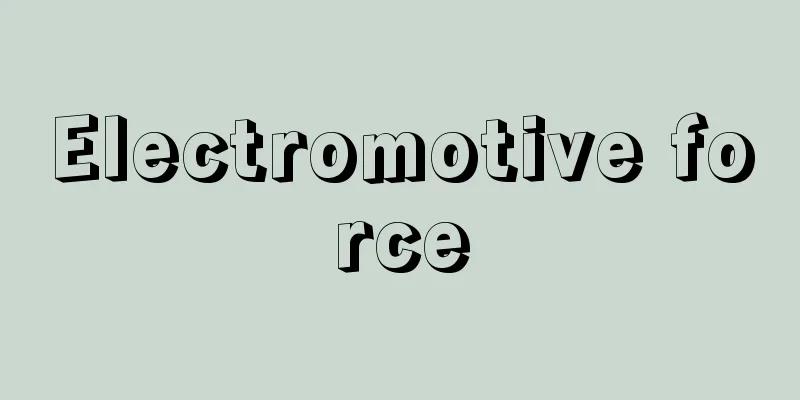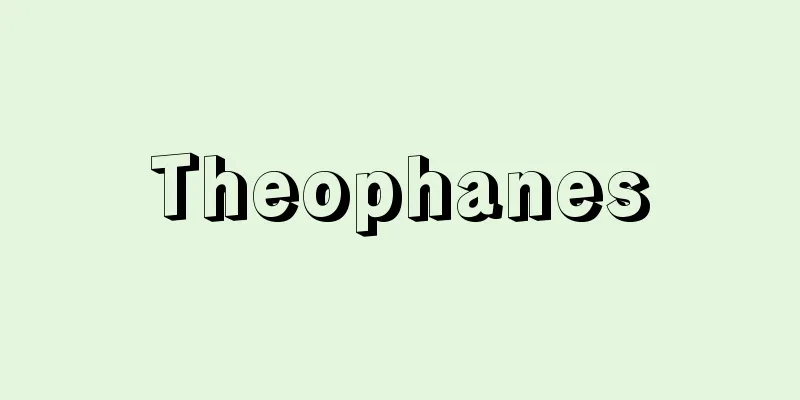Electromotive force

|
A general term for the voltage that causes current to flow in an electric circuit. It is sometimes abbreviated as EMF. To measure electromotive force, connect a voltmeter between terminals A and B of an object that has electromotive force as shown in and read the reading. There are various types and uses of electromotive force, as shown below. (1) Batteries These utilize the chemical reactions that occur inside the battery. This is called chemical electromotive force. (2) Photocells Photocells made of semiconductors generate electromotive force only when light hits them, and function as a battery. This is called photovoltaic power. Solar cells are an application of this. (3) Thermoelectromotive force Two metal wires M1 and M2 are connected as shown in , and a temperature difference is applied between junction points 1 and 2. At this time, an electromotive force appears between terminals A and B. This is called thermoelectromotive force. The magnitude of the thermoelectromotive force is expressed as a quadratic function of the temperature difference at the junction points, and can be considered to be proportional to the temperature difference at the junction points within an appropriate temperature range. A thermocouple thermometer is an application of this principle. Since thermoelectromotive force is a small voltage of about one thousandth of a volt, a millivolt voltmeter is used to measure thermoelectromotive force. (4) Induced electromotive forceWhen the magnetic flux passing through a coil is changed by inserting a magnet into or removing it from the coil, as shown in , an electromotive force is generated between the terminals A and B of the coil (Faraday's law of electromagnetic induction). This principle is widely used in generators, transformers, etc. (5) Piezoelectricity When a crystal such as quartz is distorted, a voltage is generated between the faces of the crystal. This is called piezoelectricity. This phenomenon is paired with electrostriction, in which a crystal is distorted when an electric field is applied to it. This principle is used in crystal-type earphones, gas igniters, quartz oscillators, quartz clocks, etc. Piezoelectric crystals are insulators, and it is not possible to pass a current large enough to cause the needle of a normal voltmeter to swing. The voltmeter used here is called an electrometer, which allows an extremely small current of 10-12 amperes to flow through it ( ). [Shigeo Yamaguchi] [References] | | | |©Shogakukan "> Measurement of electromotive force (Fig. A) ©Shogakukan "> Thermoelectromotive force (Fig. B) ©Shogakukan "> Induced electromotive force (Fig. C) ©Shogakukan "> Piezoelectricity (Fig. D) Source: Shogakukan Encyclopedia Nipponica About Encyclopedia Nipponica Information | Legend |
|
電気回路に電流を流す原因となる電圧の総称。EMFと略記することもある。起電力の測定には、に示すように起電力をもつものの端子AB間に電圧計を接続してその指示を読む。起電力には、次に示すようにさまざまな種類・利用法がある。 (1)電池 電池内部におこる化学反応を利用するものである。これを化学起電力という。 (2)光(こう)電池 半導体でつくられた光電池は、それに光が当たったときのみ起電力が発生し電池としての働きをする。これを光起電力という。太陽電池はこれを応用したものである。 (3)熱起電力 2種類の金属の針金M1、M2をに示すように接続し、接合点1、2の間に温度差を与える。このとき、端子AB間に起電力が現れる。これを熱起電力という。熱起電力の大きさは接合点の温度差の二次関数として表され、適当な温度範囲では接合点の温度差に比例するとみなすことができる。この原理を応用したものが熱電対温度計である。熱起電力は1000分の1ボルト程度の小さな電圧なので、熱起電力の測定にはミリボルト電圧計を用いる。 (4)誘導起電力 のように、コイルに磁石を出し入れすることによって、コイルを貫く磁束を変化させると、コイルの端子ABの間に起電力が発生する(ファラデーの電磁誘導の法則)。この原理は、発電機、変圧器などに広く利用されている。 (5)圧電気 水晶のような結晶をひずませると結晶片の面の間に電圧が発生する。これを圧電気という。これは、結晶に電界(電場)を働かせると結晶がひずむ電歪(でんわい)現象と対になった現象である。この原理は、結晶型のイヤホン、ガスの点火器、水晶発振器、水晶時計などに利用されている。圧電結晶は絶縁体であり、普通の電圧計の針を振らせるほど大きな電流を流すことはできない。ここで用いる電圧計は、これに流れる電流が10-12アンペアと極度に小さい電位計とよばれるものである()。 [山口重雄] [参照項目] | | | |©Shogakukan"> 起電力の測定〔図A〕 ©Shogakukan"> 熱起電力〔図B〕 ©Shogakukan"> 誘導起電力〔図C〕 ©Shogakukan"> 圧電気〔図D〕 出典 小学館 日本大百科全書(ニッポニカ)日本大百科全書(ニッポニカ)について 情報 | 凡例 |
Recommend
Thick-toothed clogs - Atsubageta
...Snow geta, which are used for walking on light...
Masaie Nagatsuka
Year of death: September 30, 1600 (November 5, 160...
Operator method
This is a method of solving equations that includ...
Gamou Kunpei
A scholar of the late Edo period. His given name ...
Impulse (physiology) - Impulse
…(2) Muscle contraction Skeletal muscles come in ...
Kingdom of Burundi - Burundi Kingdom
A kingdom in the interior of East Africa, in what ...
"An American Tragedy" (Sternberg) - American Beard
...He then attracted attention with ``Downtown,&#...
Feng Guo-zhang (English: Feng Guo-chang)
Born: 1859 [Died] 1919 Leader of the Zhili faction...
Guthrie, W.
…American folk singer, guitarist, banjoist, and c...
SV Wave
…Since longitudinal waves travel faster than tran...
Aden Abdullah Osman
...When the country gained independence in 1960, ...
morning glow
...When sunlight enters the Earth's atmospher...
Xanthippe - Xanthippe (English spelling)
Date of birth and death unknown. Wife of Socrates...
《Phraseology and Law》 - Kugihokoyo
…Atoms cannot be perceived by direct perception, ...
Lead pipe phenomenon
…When the muscles of the limbs are in a state of ...









